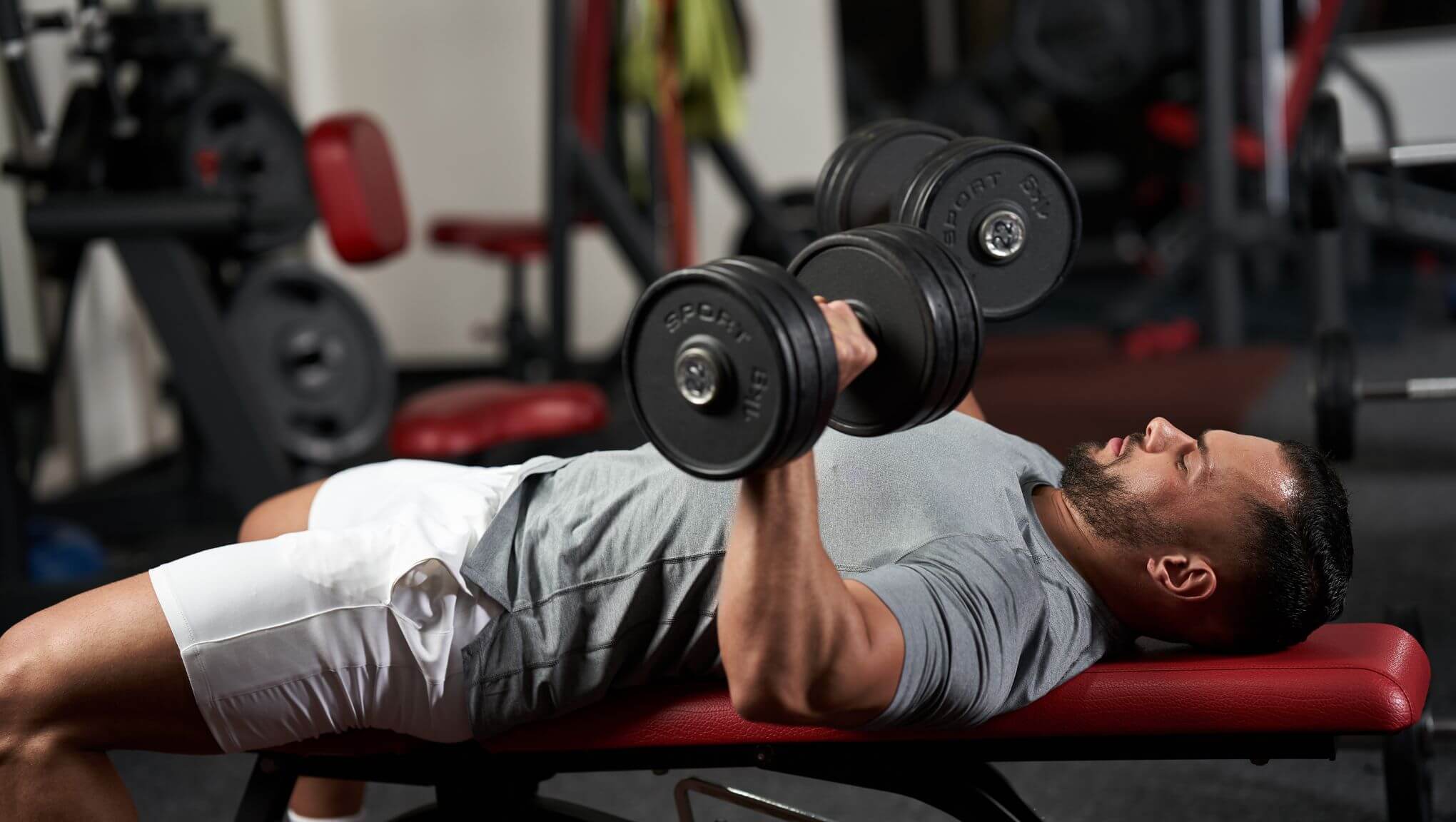

When it comes to sculpting an impressive chest, one of the often-neglected areas is the upper chest. While many individuals focus on flat bench presses and standard push-ups, targeting the upper chest muscles is crucial for achieving a well-rounded, balanced, and aesthetically pleasing chest.
In this comprehensive guide, we’ll delve deep into the importance of the upper chest, explore its benefits, provide detailed instructions for the most effective exercises, and discuss advanced strategies for those looking to take their chest development to the next level.
Before we dive into exercises and strategies, it’s essential to grasp the anatomy and significance of the upper chest muscles. The upper chest, specifically the clavicular head of the pectoralis major, plays a pivotal role in chest aesthetics and overall upper body strength.
Anatomy of the Upper Chest
The upper chest is a distinct part of the pectoralis major muscle, located just below the collarbone. It’s responsible for the elevation and flexion of the arm, making it essential for various upper body movements.
The Role of the Upper Chest
The upper chest is not just about aesthetics; it’s about functional strength and balance. Targeting this area helps prevent muscle imbalances, improves posture, and enhances overall upper body performance.
When it comes to sculpting your chest, it’s essential to target all areas for maximum development and symmetry. Now, let’s explore the multiple advantages of prioritising upper chest development in your fitness routine.
Targeting the upper chest ensures a well-rounded and balanced chest development. By incorporating exercises specifically designed to engage the upper chest muscles, you can achieve a fuller and more symmetrical chest appearance.
Engaging the upper chest muscles helps improve posture and alignment. Strengthening these muscles can counteract the effects of poor posture and rounded shoulders, leading to a more upright and confident stance.
The upper chest plays a crucial role in shoulder stability, helping to prevent injuries. By focusing on this muscle group, you can strengthen the surrounding muscles and reduce the risk of shoulder instability and related injuries.
The upper chest is a significant contributor to overall upper body strength. By targeting this muscle group, you can enhance your lifting abilities and improve performance in various upper body exercises. Additionally, a well-developed upper chest enhances the overall aesthetics of your physique, creating a more balanced and chiseled appearance.
The incline bench press is an effective exercise for targeting the upper chest muscles. Proper form, grip, and breathing technique are essential for optimizing muscle engagement and avoiding injury.
The incline dumbbell press is another effective exercise for targeting the upper chest. It offers unique benefits and execution tips for optimal results.
Push-ups can be modified to specifically target the upper chest muscles, providing an effective bodyweight exercise option.
Incorporating incline dumbbell flyes into your upper chest workout routine helps to isolate the upper chest muscles and improve muscle activation.
Utilising the incline cable flyes exercise can further enhance the activation and development of the upper chest muscles.
To effectively target the upper chest, it is important to follow a training routine that prioritizes exercises specifically designed for this muscle group. Here is a sample upper chest-focused workout plan with recommended sets, reps, and rest periods:
This upper chest-focused workout routine should be performed 2-3 times per week for optimal results. Make sure to use proper form and technique to maximize muscle activation and minimize the risk of injury.
Progressive overload is essential for continuous muscle growth and strength development. To incorporate progressive overload into your upper chest training, try the following techniques:
Suggestions for incorporating upper chest exercises into a weekly training split:
For optimal upper chest development, aim to train this muscle group at least 1-2 times per week. Remember to allow adequate rest and recovery between training sessions.
When targeting the upper chest, it’s important to also pay attention to the muscles in your shoulders. These muscles play a supporting role and assist in the execution of upper chest exercises.
The front deltoids, or anterior deltoids, are the muscles located at the front of your shoulders. Engaging these muscles during upper chest exercises helps to maximize the effectiveness of your workout and ensures balanced muscle development.
Shoulder stability is crucial for performing upper chest exercises safely and effectively. Strengthening the muscles surrounding your shoulder joint will enhance stability, reduce the risk of injury, and improve your overall upper chest development.
In addition to shoulder muscles, the triceps and back muscles also play a vital role in supporting upper chest development. Including exercises that target these muscle groups as part of your workout routine will help improve overall upper body strength and enhance your upper chest gains.
Some triceps exercises also activate the upper chest muscles, making them excellent complementary exercises to incorporate into your upper chest training routine. By targeting both muscle groups simultaneously, you can effectively stimulate muscle growth and enhance your upper body aesthetics.
A strong and stable back is essential for maintaining proper form and alignment during upper chest exercises. Strengthening your back muscles will not only support your upper chest development but will also contribute to improved posture and overall upper body strength.
Importance of correct positioning and range of motion:
When performing exercises to target the upper chest, it is crucial to maintain proper form and technique. Correct positioning ensures that the targeted muscles are effectively stimulated, leading to better results.
To target the upper chest, make sure to position your body in a way that places emphasis on the upper chest region. This can be achieved by using an incline bench or adjusting the angle of the bench to a higher incline.
Furthermore, focus on maintaining a full range of motion. Lower the weights down slowly and controlled, allowing your upper chest muscles to stretch fully. This ensures that you’re engaging the desired muscle fibers and maximizing the benefits of your exercises.
Breathing techniques for optimal muscle activation:
Proper breathing techniques are essential for optimal muscle activation during upper chest exercises. Breathing correctly helps stabilise the body and assists in generating power.
During each repetition, inhale deeply before initiating the movement and exhale forcefully when exerting force or lifting the weights. This controlled breathing pattern helps maintain stability and engages the upper chest muscles more effectively.
Common mistakes to avoid while performing upper chest exercises:
By following these proper form and technique guidelines, you can safely and effectively target your upper chest muscles with precision, leading to improved strength and development.
Tracking your progress is essential for monitoring your upper chest development and ensuring that you are on the right track. By regularly assessing your progress, you can make adjustments to your workout routine and track your success over time. Here are some effective ways to measure and track your upper chest development:
One way to measure your upper chest development is by taking regular body measurements. Measure the circumference of your chest at the widest point, focusing on the upper chest area. By recording these measurements and comparing them over time, you can track any growth or changes in size.
In addition to body measurements, progress photos can provide visual evidence of your upper chest development. Take photos from various angles to capture the changes in muscle definition, size, and overall upper chest appearance. When comparing photos taken weeks or months apart, you can clearly see the progression of your upper chest development.
Another effective way to track your upper chest development is by setting strength benchmarks and monitoring your performance improvements. Keep track of the amount of weight you lift during exercises that target the upper chest, such as incline bench press or dumbbell flyes.
Regularly test and track your strength by increasing the weight or repetitions as you make progress. This will help you gauge your upper chest’s strength and determine if you are steadily improving. If you notice that you can lift heavier weights or perform more repetitions over time, it is a good indication that your upper chest muscles are developing.
By combining body measurements, progress photos, and strength benchmarks, you can get a comprehensive view of your upper chest development. Remember to track your progress consistently to ensure accurate measurements and to make adjustments to your workout routine accordingly.
When it comes to targeting the upper chest, avoiding common mistakes and taking necessary injury prevention measures is crucial for achieving desired results. Here are some key aspects to consider:
One common mistake individuals make is overtraining their upper chest muscles. While it is important to challenge yourself during workouts, pushing beyond your limits without sufficient rest can lead to injury and hinder progress. To prevent overtraining, incorporate rest days into your training routine, allowing your muscles adequate time to recover and rebuild.
Improper form and technique can not only reduce the effectiveness of your upper chest exercises but also increase the risk of injury. To ensure proper form, start with lighter weights and focus on mastering the correct technique. Engage your upper chest muscles throughout the exercise and avoid unnecessary strain on your joints. If you are unsure about correct form, consider working with a qualified trainer or consulting reliable resources.
When performing exercises that target the upper chest, it is essential to take specific precautions to prevent injury. Keep the following tips in mind:
By following these injury prevention measures and avoiding common mistakes, you can prioritize your safety while effectively targeting your upper chest muscles.
A well-balanced diet plays a crucial role in the development of chest muscles, specifically targeting the upper chest. Proper nutrition ensures that your muscles receive the necessary nutrients to grow and recover effectively.
When it comes to upper chest development, consuming a well-balanced diet is essential. It provides the body with the necessary energy and nutrients to support muscle growth and repair. A diet rich in lean proteins, healthy fats, and complex carbohydrates is particularly beneficial for building upper chest muscles.
For optimal upper chest muscle development, it is important to focus on the right balance of macronutrients. Protein is crucial for muscle repair and growth, so make sure to include sources like chicken, fish, lean beef, and eggs in your diet. Aim for approximately 1 gram of protein per pound of your body weight.
Carbohydrates are a valuable energy source, aiding in muscle recovery and glycogen replenishment. Opt for complex carbohydrates like whole grains, fruits, and vegetables to ensure a steady supply of energy throughout your workouts.
Healthy fats, such as avocados, nuts, and olive oil, are important for hormone production and overall health. They also help with the absorption of fat-soluble vitamins, which contribute to optimal muscle development.
In addition to a well-balanced diet, certain supplements may enhance your upper chest muscle growth. However, it is important to note that supplements should not replace a nutrient-rich diet but rather complement it.
Creatine is a popular supplement that has been shown to increase muscle strength and size. It helps provide energy to the muscles, allowing for more intense workouts and improved upper chest development.
Branched-chain amino acids (BCAAs) are another supplement that may aid in muscle growth and recovery. They provide essential amino acids that support protein synthesis and muscle repair.
Lastly, beta-alanine is a compound that may increase muscle endurance and delay fatigue. This can be beneficial when performing high-intensity exercises that target the upper chest.
Remember to consult with a healthcare professional or registered dietitian before starting any new supplementation regimen to ensure it aligns with your individual needs and goals.
In conclusion, focusing on your upper chest muscles offers significant benefits for your physique and strength. It contributes to a balanced chest appearance and enhances overall upper body strength. However, remember that it’s just one piece of your fitness puzzle. A well-rounded training plan, proper form, and tracking your progress are essential. Nutrition and supplements also play a vital role in supporting muscle growth. Whether you’re a fitness veteran or a beginner, prioritise upper chest exercises for a sculpted and powerful chest.